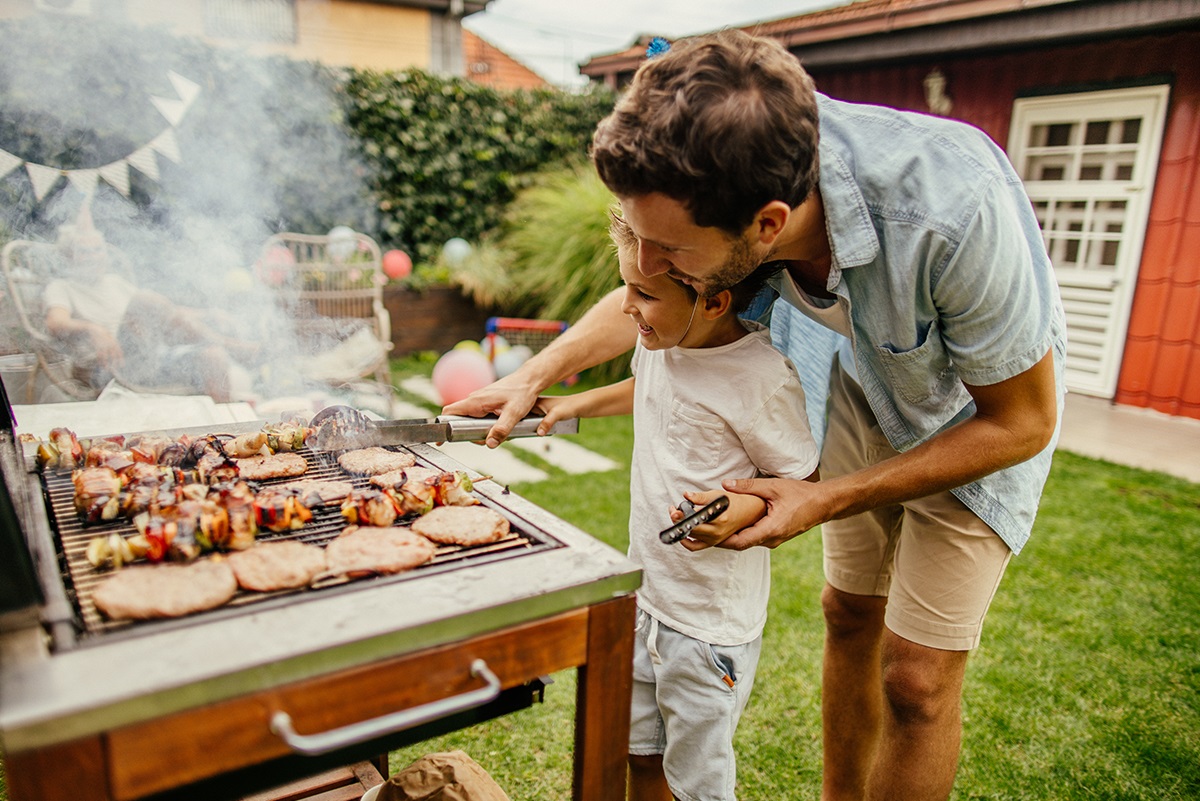Staying Out of the Danger Zone: A Guide to Summer Food Safety
July 1, 2025
By: Jacob Hall, MD
Categories: Healthy Eating
Hot weather can increase risks for foodborne illnesses
Summer is one of the best times to spend with family and friends. While nothing brings people together better than good food, we must remember that hot weather can increase risks for foodborne illnesses.
1. The Danger Zone: The danger zone refers to the temperature range between 40°F (4°C) and 140°F (60°C). Bacteria multiply rapidly within this range. This poses a major risk of foodborne illnesses. It's crucial to minimize the time food spends in this zone to reduce the chances of bacterial growth.
2. Thorough Handwashing: Washing our hands is vital to avoid transmission of illnesses. Everyone involved in food preparation should wash with warm soapy water for at least 20 seconds. Hand sanitizers are a good alternative if soap and water aren’t on hand. When you are camping or traveling make sure to plan ahead if you won’t have clean water available. For little ones, singing the ABCs while washing can encourage enough time is spent at the sink.
3. Safe Food Storage: It is almost impossible to keep food above 140°F when traveling. Instead, focus on keep foods cool until they are needed. Coolers with ice or ice packs can be used to keep things below 40°F. Food should stay in the cooler until it is ready to be cooked or served.
4. Proper Grilling Practices: The grill can add excitement to summer meals. But meats are responsible for many foodborne illnesses. Raw meats, poultry, and seafood should be stored in separate containers to avoid cross-contamination. Raw and cooked foods should be prepared using separate utensils and cutting boards. Finally, make sure meats are cooked to a safe temperature using a food thermometer.
- Ground Meats (160°F)
- Beef or Venison Steaks (145-170°F)
- Poultry (165°F)
- Fish and Shellfish (145°F)
- Ham (160°F)
5. Don't Leave it Out: Perishable foods left out in the heat will grow bacteria rapidly. If food has been sitting for two hours at room temperature the safest course is to throw it out. On hot days greater than 90°F food should be thrown out after one hour.
6. Leftovers: One of the best parts of a summer party are the delicious leftovers. To reduce risk of illness, refrigerate food within 2 hours of cooking. Keep the food in shallow, airtight containers and try to eat it within 3-4 days.
7. Stay Hydrated: While this isn’t necessarily related to food safety, adequate hydration goes a long way to reduce heat related illness. Make sure that if you are out in the sun you have cool water on hand and drink from it regularly.
I hope as we get into the hottest months of the year you enjoy plenty of sunshine and outdoor activities. With a little planning and understanding of the Danger Zone we can minimize the risk for foodborne illnesses while still having a great time. Stay safe, stay healthy, and enjoy some delicious foods!

